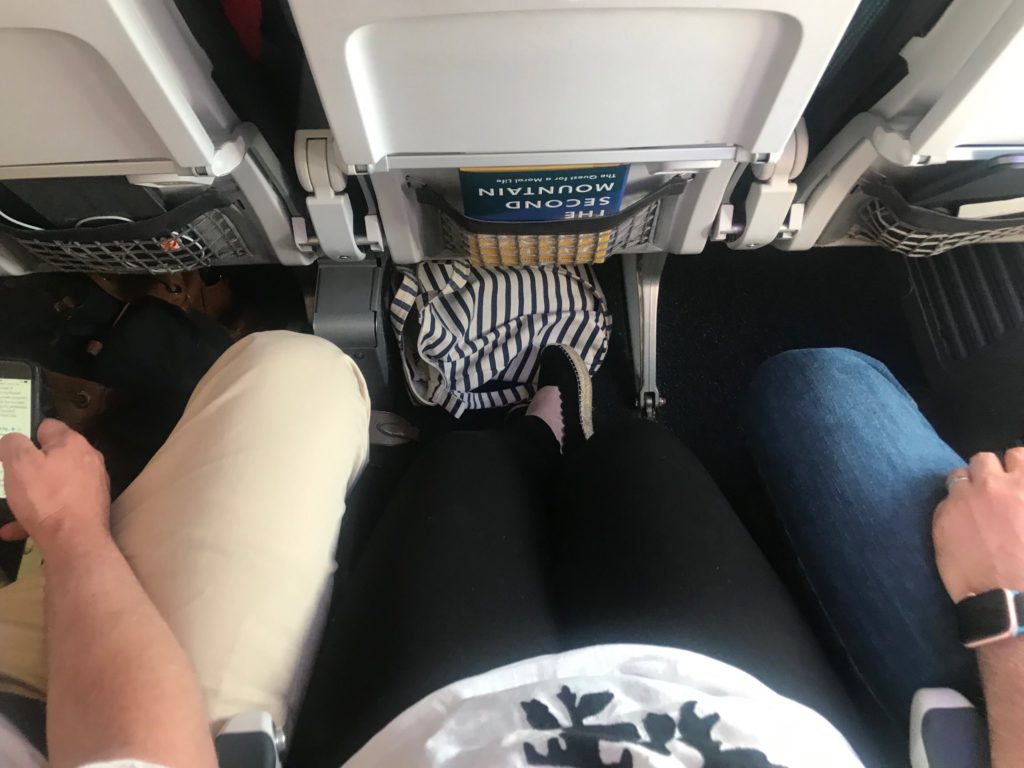What to Do When You Encounter Sexism at Work: Micro-Inclusions
A few weeks ago, when I wrote about sexism and the most common microaggressions that women experience at work, I heard from a woman about an incident that had just occurred at a community networking event. Her national organization was hosting the event on a downtown rooftop in a big city.

An older, white man walked up to three women sitting on a bench and sandwiched himself between them, made an inappropriate racial comment, then placed his hand on one of the women’s legs. When the woman said, “Excuse me, why are you touching my leg?” He replied, “You know you like it.” He then had the audacity to give the woman he touched his business card, ask her if she had a boyfriend, and say, “Email me and tell me what a good looking man you think I am, and I’ll see if I can find you a boyfriend…” (followed by yet another racially insensitive comment).
The women got up to get away from him, and he left the event. As they shared this appalling incident with their coworkers, a male C-Suite leader of the organization immediately asked someone to hand him the man’s business card, and said angrily, “No one contact him. I am going to call him and tell him that we are never doing business with him and his behavior was completely out of line and unacceptable.” The executive assumed responsibility for dealing with the offender’s sexism and racism because he had the power and influence to hold the offender responsible and accountable.

Hearing this story only heightened my urgency to share specific actions that you can take to combat microaggressions.
Confronting someone’s sexism, negative, or biased behavior is difficult. One of the best ways to make it a little easier is to be prepared with what you want to say/do if you do experience or witness a microaggression. I like to call these actions micro-inclusions.
MICRO-INCLUSIONS
Micro-inclusions create space for everyone to feel safe and supported. The actions are small (micro) but in multitudes, they have a big impact.
Women describe microaggressions as “death by a thousand cuts.” Microinclusions have the same power in their number but in the opposite direction – they create inclusion, safety, well-being in the workplace.
BE PREPARED TO ADDRESS MICROAGGRESSION 1
Calling women by seemingly endearing names.
Micro-inclusions:
- Pet names are reserved for intimate, personal relationships. Avoid using them in professional settings.
- A good rule of thumb is to only call people by their names. If you find yourself choosing to call someone something other than their name, ask yourself why you do that. Is that an alternative both of you have agreed upon? I am guilty of this. I frequently call women I care about, darling. But what if instead of making that person feel supported or valued, I am making them diminished?
- To be sure you are being respectful, ask your coworker if the name you call them makes them uncomfortable and be ready to stop using it if they tell you it does.
BE PREPARED TO ADDRESS MICROAGGRESSION 2
Same Behavior, Different Description: This type of microaggression occurs when people describe a woman’s actions in ways that would not be used to describe a man who did the same things.
Micro-inclusions:
- When you use a term to describe a woman’s behavior, ask yourself if you’d describe the same actions by a man in the same way. Kristen Pressner calls this, Flip it to Test it.
- Think about how the actions and attributes the person is exhibiting are strengths and use a positive description instead, e.g. “You are a nag” vs “You are great at follow up”.
- If you hear someone use a derogatory description ask them why they did e.g. What do you think makes her so pushy? What did she say specifically that made you say that?”
- Call it what it is. If you hear someone say something sexist say, “That was a sexist description”.
BE PREPARED TO ADDRESS MICROAGGRESSION 3
Benevolent Sexism: Benevolent sexism is believing or acting as if women are weak and need the protection of men.
Micro-inclusions:
- Avoid making assumptions about your coworkers’ needs, desires, ambitions and what they would be willing to do or not do. Instead, ASK! I recently worked with a woman who had taken a last minute three-year assignment in Argentina while she was pregnant. Her husband has put his career on hold and is the stay at home parent. Another woman shared with me that while she lives and works in the US, her husband currently works in Europe. All is well in their marriage and relationship, She relayed that they have a lot of fun when they meet and feel that the decision they’ve made have been great for their careers and family. More and more families regularly make these types of choices.
- When you see someone rescuing a woman or making assumptions about what will or won’t work for a woman,, call it what it is – “Your action is referred to as benevolent sexism. Do you know what that means?”
- If you find yourself assuming one of your women coworkers will not want to join the group after work, take a promotion, etc. because of her roles as a mother (or other reasons), invite her or ask her anyway.

BE PREPARED TO ADDRESS MICROAGGRESSION 4
Underestimating: Women report that they are regularly underestimated by colleagues and clients.
Micro-inclusions:
This one is pretty straightforward: don’t make assumptions or underestimate someone based on gender, ethnicity, or any other demographic or arbitrary criteria. Introduce yourself to each person you meet in the same respectful way and let them tell you who they are and what they do.

An example of “manspreading” on a flight, shared by Katherine M. Gordon.
BE PREPARED TO ADDRESS MICROAGGRESSION 5
Invasion of Space and Inappropriate Touching.
Micro-inclusions:
- This should go without saying: don’t touch someone without their permission.
- If you see someone inappropriately touching another coworker, bring it to their attention. .
- Be aware of the space you are taking up. Katherine M. Gordon recently tweeted this photo of “manspreading” on a flight.
When you walk into a room, take note of how you are presenting yourself, where you sit, how much space you take up and if you have given others around you enough space to feel comfortable.
Micro-inclusions are not a one-time effort. Creating an inclusive workplace takes all of us. Remember that policies don’t change the workplace – people do!